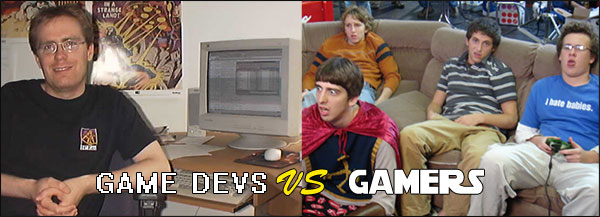Game Testing Versus Game Design
I knew a couple of guys that were part of a game development team. The game was made by a small team of dedicated enthusiasts and most of them were programmers at heart. It was a strategy game set in space, not unlike Homeworld (if any of you still remember that great game). They slaved at it for 3 years for a small wage hoping to make it big once the game is released. They even got a worldwide publisher, which meant they had a sellable product. When the game came out many tried playing it but found it unnecessarily complex at times and hard even when it didn’t need to be. It had a small following of dedicated fans but it never made it big because it asked too much of players to be widely accepted.
The problem with that game was that the programmers made a game for themselves. There was a lot of math involved and complex systems that would make an analytic mind very happy. The problem is that gamers are not analytic machines. They are gamers of various personalities and mindsets and if you are a game maker you better make sure you are pleasing a larger variety of people than just programmers, unless, of course, you were making the game for three years just to play it yourself.
What brings games closer to gamers is game testing. Involvement of gamers into the game making process introduces another set of minds, other than that of game designers themselves. This brings fresh perspectives and usually changes the game significantly. We saw a glimpse of this process during Q&A sessions at San Diego Comic Con this year. We found out that some systems designed long ago by game designers have been changed based on game testers’ input. There were even some changes so significant (in terms of time needed to develop the system again) that I was rather surprised they decided to do this so late in the game.
Click here to read how game testing influenced SWTOR and if it’s a good thing





